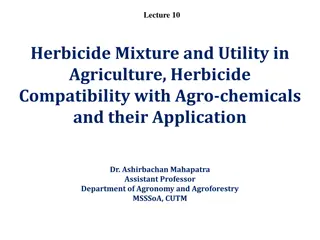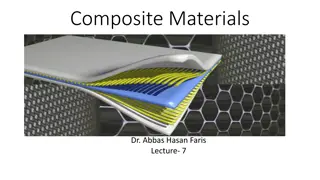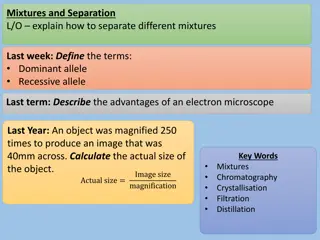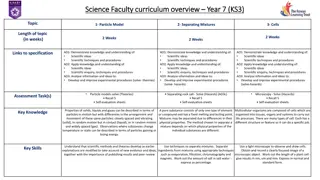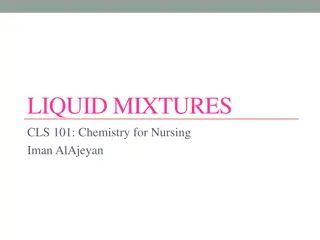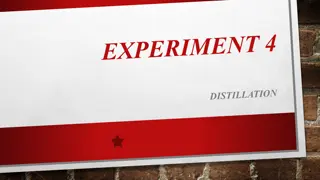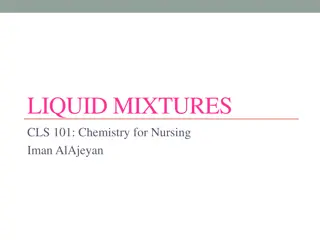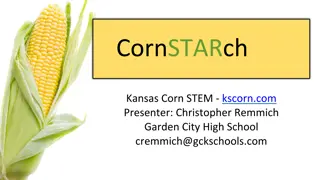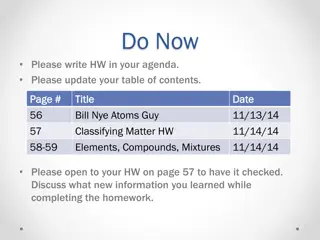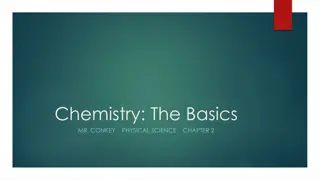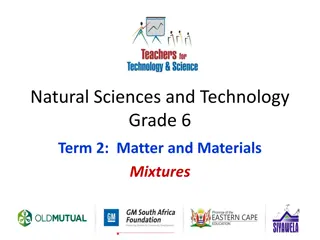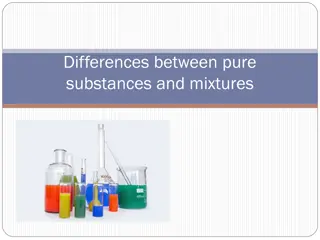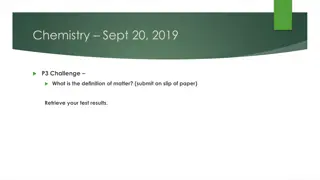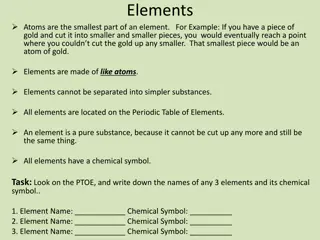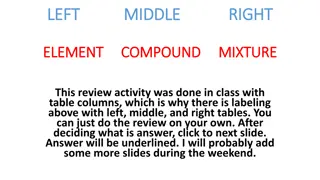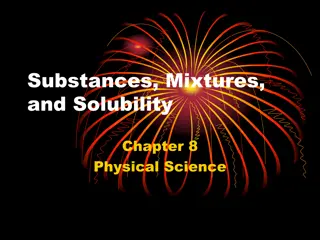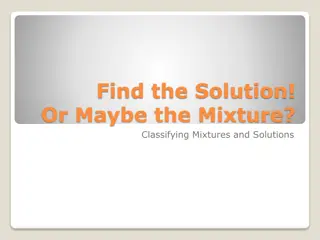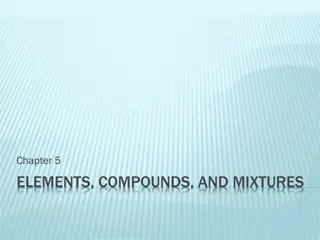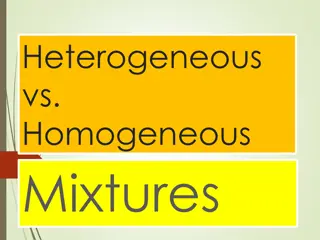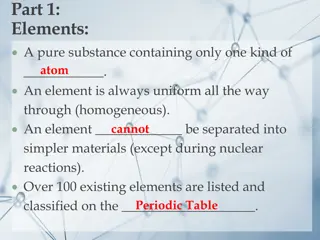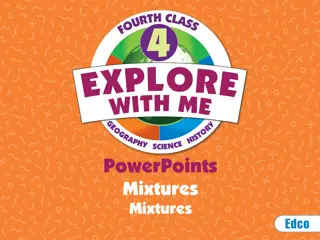Mixtures and Separation Methods
A mixture is a combination of ingredients that can be separated by various methods like sieving, filtering, and evaporation. Magnets are also used to separate magnetic objects. Sieving separates solid particles by size, while filtering separates tiny particles from liquids. Evaporation is used for separating solid substances dissolved in water. Learn more about mixtures and how to separate them effectively.
Uploaded on Sep 23, 2024 | 2 Views
Download Presentation

Please find below an Image/Link to download the presentation.
The content on the website is provided AS IS for your information and personal use only. It may not be sold, licensed, or shared on other websites without obtaining consent from the author.If you encounter any issues during the download, it is possible that the publisher has removed the file from their server.
You are allowed to download the files provided on this website for personal or commercial use, subject to the condition that they are used lawfully. All files are the property of their respective owners.
The content on the website is provided AS IS for your information and personal use only. It may not be sold, licensed, or shared on other websites without obtaining consent from the author.
E N D
Presentation Transcript
Mixtures A mixture is a combination of ingredients. The individual ingredients in a mixture are not permanently changed. They are just mixed together. They can be separated again.
Separating mixtures The method of separation will depend on the size of the ingredients or particles in the mixture. We can separate some mixtures by sieving or filtering. If the mixture is a solution, we can separate it using evaporation.
Magnets Magnets can also be used to separate some mixtures. Huge magnets are used at recycling plants to separate the magnetic objects from the non-magnetic objects.
Sieving You can separate solid particles of different sizes by sieving. A sieve is a shallow container with holes. The smaller particles can pass through these holes, but the larger ones get trapped in the sieve.
Sieving Sieving can be used to separate pebbles from sand or lumps from flour.
Filtering Filtering can be used to separate tiny solid particles from a liquid. The filter has tiny pores. The liquid can flow through these pores, but the solid particles cannot. A coffee filter separates coffee grinds from coffee.
Filtering Drinking water is filtered before it reaches our taps. Impurities are separated from the water, making it suitable for drinking.
Filtering Some people like to filter their tap water even more, using a filter jug. The filter is found inside the container in the jug. It has to be changed regularly.
Evaporation Evaporation can be used to separate a mixture containing a solid substance dissolved in water (a solution). The mixture is heated until all of the liquid has evaporated and the solid substance is left behind. evaporation solution heat
Evaporation Evaporation occurs widely in nature. For example, saltwater dries under the heat of the sun. The water evaporates, but the salt gets left behind.
Separating solutions With the help of an adult, you could carry out an experiment to separate a saltwater solution. When the saltwater is heated to boiling point, you will see the water evaporate as steam. When all of the water has evaporated, the salt will be left behind.
Separating mixtures Knowledge of separating mixtures is used widely in environmental science. Pollution and impurities can be separated from the water in rivers, lakes and oceans. This makes them safer for birds, aquatic animals and humans.
Illustrations Shutterstock Beehive


